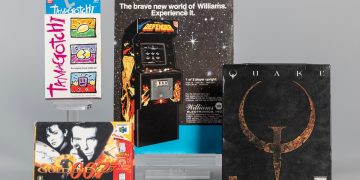Some folks are quick to label Tetris as the quintessential game, and it’s tough to dispute that claim. Since its creation in 1985, Tetris has not only survived but thrived across multiple generations and platforms, finding a home on just about every device imaginable. The gameplay is simplicity itself: geometric blocks, like L-shapes, squares, and z-shaped zigzags, fall one by one. Your job? Fit them together to complete horizontal lines across the screen, clearing space for more shapes to work their way down.
Tetris offers such a versatile experience that players can engage with it for relaxation or embrace it as a competitive challenge. But for those who seek even more excitement, there are imaginative twists on the classic formula.
Take Tetris 99, for instance, a battle royale version on the Nintendo Switch. Participants play in their own independent game, steadily increasing in pace until just one person emerges victorious. Though some players are knocked out early, it’s far from an easy ride. You aren’t merely competing against other Tetris enthusiasts; you’re also dodging their attempts to trip you up by dumping their excess blocks onto your screen. Personally, I’ve managed to snag a couple of victories in Tetris 99, and each win was a fiercely contested struggle.
Even classic Tetris ratchets up the difficulty by keeping players on their toes as the falling blocks accelerate, eventually forcing an end to the match. In January 2024, a 13-year-old gamer astonished everyone by defeating NES Tetris, an achievement many deemed impossible. The game’s design is so straightforward yet intuitive that developers are constantly inspired to shake it up.
Consider the intriguing Schwerkraftprojektiongerät, a fan creation by Stephen Lavelle. This version presents Tetris from four angles simultaneously, twisting gravity so blocks tumble across each screen. Another independent developer, through “Terrible Tetris Tuesday,” presents fresh, chaotic twists weekly on the classic, offering versions with sticky blocks or blinding fog.
October 2024 saw the release of Reaktor, initially appearing as part of this genre. However, it presents a twist: instead of lining up blocks from the bottom, you’re assembling a central cube, with gravity shifting like a windmill each turn. Watching the cube spiral can be daunting, but wrestling with these chaotic conditions to build a cube introduces an engaging challenge.
Despite thinking I had a bond with the Tetris pieces, Reaktor made me second-guess each move. How could my trusty L-block betray my strategy so thoroughly? It’s always captivating to watch developers revisit and reinvent such an iconic game. If you’re eager to push your brain against a new iteration of Tetris’s classic puzzle, something like Reaktor is worth exploring. Fortunately, the world will always offer new spins on Tetris—be it through games like Puyo Puyo Tetris 2, Tetris Effect, or imaginative indie projects that transform this comforting puzzle game into a cerebral challenge.










![[PS5] Review of Lost Records: Bloom and Rage – Tape 2 [PS5] Review of Lost Records: Bloom and Rage – Tape 2](https://www.intergamerz.com/wp-content/uploads/2025/04/Complimentary-Game-Lost-Records-Bloom-and-Rage-PS5-Giveaway-North-360x180.jpg)






















![[Industry Direct] PHI Studio & Agog Invite Applications for a Four-Week Residency for Immersive Artists [Industry Direct] PHI Studio & Agog Invite Applications for a Four-Week Residency for Immersive Artists](https://www.intergamerz.com/wp-content/uploads/2025/05/Industry-Direct-PHI-Studio-Agog-Invite-Applications-for-a-360x180.jpg)












